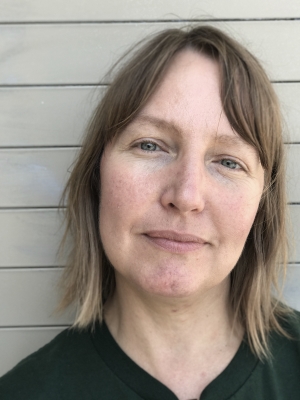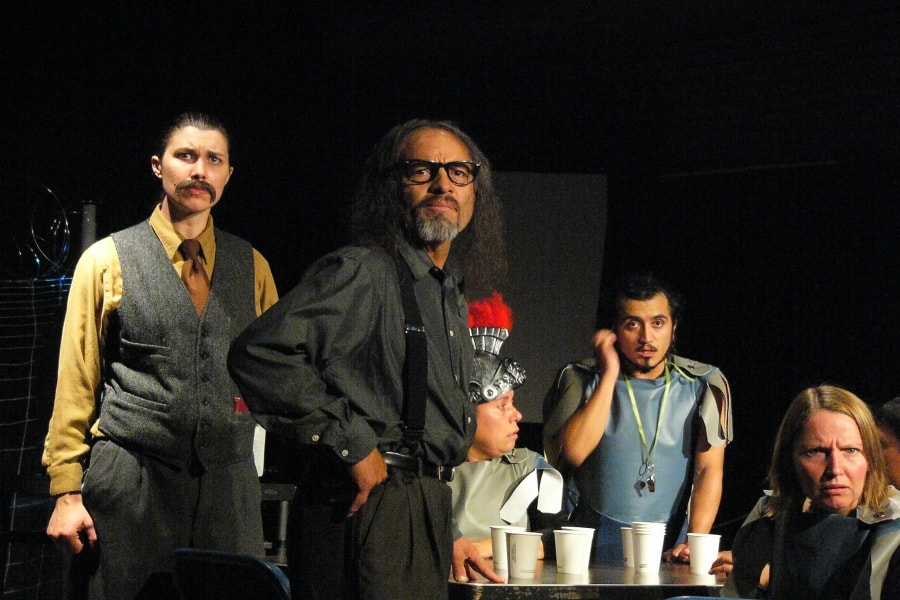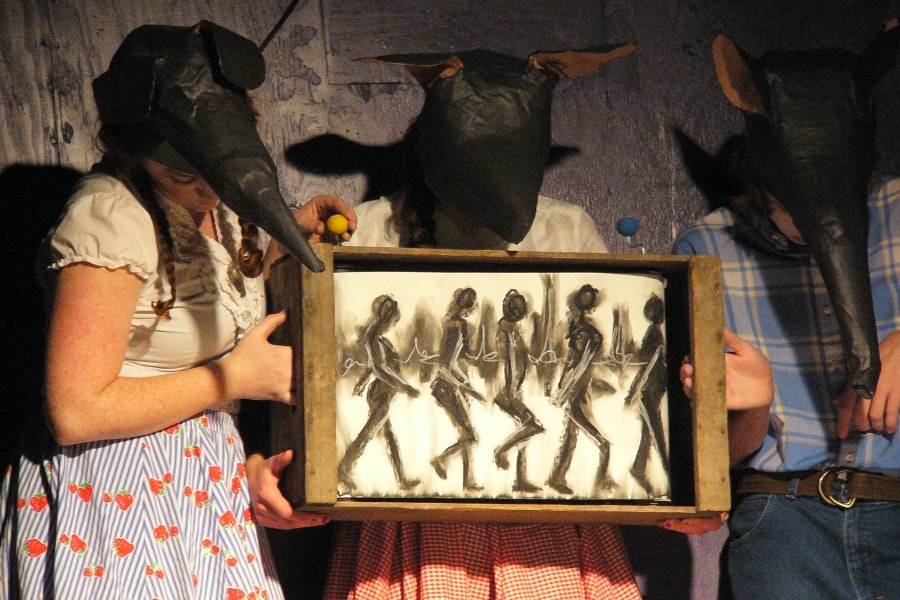SANTA ROSA: Outside the glare of San Francisco—approximately 60 miles north—is the city of Santa Rosa. Known for its wine vineyards and redwood forests, Sonoma County is also home to a vibrant performing arts scene. Last month, the most destructive wildfires in California’s history besieged the city. The Imaginists, a theatre collective that has been part of Santa Rosa’s culture scene since 2002, is folding the experience of the fires and the devastation felt by the community into its newest work. “I think the most difficult and interesting part is how to respond artistically to the complexities and realities of a massive disaster,” says Amy Pinto, co-founder and co-artistic director. While the theatre’s building was not affected by the fires, many staff members, donors, and audience members lost their homes. “I think artists can play an important role in imagining the kind of city we want to live in,” she says. “’Rebuilding’ will take the work of imagination too.” American Theatre caught up Pinto via email to learn more about the company’s history, and its rebuilding efforts in the wake of the firestorm.

Who founded the Imaginists, when, and why?
Brent Lindsay and I founded the Imaginists in 2002. After being a part of an experimental theatre collective (KITUS) for 10 years, Brent and I were reinventing. Our impulse was to keep experimenting.
Tell us about yourself and your connection to the theatre.
I grew up in Delaware. Went to theatre school in the late ’80s at UNCSA, (where Brent and I met). I worked briefly with Living Stage Theatre Company under Bob Alexander in Washington D.C., which had a big impact on my thinking about how theatre can function in a community. I formed an experimental company with my peers from NCSA in the early ’90s in a one-hundred-year-old schoolhouse in the woods of Delaware. We developed our own process, aesthetic, and productions influ
enced by the place in which we were; its limitations and possibilities. We also had to build an audience for our work! This experience gave me the courage to fail and embrace exploration and reinvention. This is where I learned making a theatre is theatre.
What sets your theatre apart from others in your region?
We completely rethink theatre—who participates, where it happens, and what it is. We consistently create original work, often bilingual (Spanish and English) responding to global and local issues, with and for our Santa Rosa community and beyond. Our work intentionally upsets assumptions and expectations, especially our own. We explore the intersection of art and community collaborating with community members, non-profit organizations, and artists across discipline. Our projects invite the unknown from process to performance, respond to the here and now, reimagine public space, and investigate participation on many levels.
For the past 10 years we have been actively pursuing accessibility and inclusion in making and experiencing theatre, investigating new non-profit arts organizational models, training and mentoring emerging and amateur artists, and offering pay-what-you-can and sliding scale ticketing for all of our performances at our home base. We have a paid summer apprenticeship program for local high school juniors and seniors from low-income districts. Every summer for the past eight years we have toured El Show el Arte es Medicina—free, bilingual performances that travel to city parks and Redwood Empire Food Bank summer lunch sites by bicycle caravan.
Who is your audience?
We’ve been working for more than 20 years to create a new audience for theatre, and that’s still at the heart of our mission. Our audience is diverse in age, ethnicity, and socio-economic background, many are newcomers to theatre. Our audience is open to the experiment, ready to be challenged, adventurous, open to discussion and conversation, at ease voicing their criticism.
Tell us about your favorite theatre institution other than your own, and why you admire it.
- Forced Entertainment—a group of artists working consistently for more than 30 years, uncompromising, reinventing, questioning, cultivating failure, rigorous, funny!
- Chocolate Factory Theater for their organizational model of supporting artists by supporting artists’ process, small and local focus, creating a shared culture, and big vision and scope.
- Target Margin Theater—the ongoing conversation from project to project.
- Krétakör (Árpád Schilling, Hungary) because they are absolutely courageous, challenging, exact, rigorous dramaturgy, questioning, and reinventing always.
- Teatr.doc, & Gogol Center (Russia), Belarus Free Theatre (London) for using theatre to directly speak to social justice issues, freedom of speech and artistic expression.
- Roadside Theater/Appalshop, Squat Theatre, El Teatro Campesino, Free Southern Theater, Bread and Puppet Theater, the Living Theatre, the Wooster Group, and Hallie Flanagan/Federal Theatre Project for their timeless vision and inspiration!
How do you pick the plays you put on your stage?
They come from current external forces and current internal force. For example, one of our company members was going through the DACA process while we were performing The Art is Medicine Show (2012). His experience became the basis for REAL (2013), exploring DACA and the Dream Act. Ratcatcher (2012) was inspired by the issue of artist displacement. La Carpa Americana (2015) responded to our country’s immigration policies. Magic Circle Cycle (2016), which went into rewrites Nov. 9, was inspired by the presidential election and the national debate.

What are your favorite site-specific spaces the Imaginists have performed at?
We performed a solo deconstructed Hamlet in an old slaughterhouse. Hamlet played out his story over a large drain in the floor that was marked BLOOD. A raised concrete block where the sheep were slaughtered was Ophelia’s altar. We perform inside and out of our storefront space using the street a la Squat Theatre, cars and all. The most interesting might be our performance at the Green Center, a beautiful (and contested) symphonic hall on the campus of Sonoma State University. We essentially occupied that space with a bilingual (Spanish and English) piece called La Carpa Americana, turning notions of class and performance on their heads.
What’s your annual budget, and how many artists do you employ each season?$150,000. The company fluctuates, but we’re usually working with about 15 artists, across discipline, consistently throughout the year, over years.
What show are you working on now? Anything else in your season that you’re especially looking forward to?
We’re working on a piece about a futuristic submarine fleet manned by an outsider group of women eco-terrorists. It’s inspired by Jules Verne’s 20,000 Leagues Under the Sea, and the work of Donna Haraway.
We’re also really excited to celebrate our tenth annual free, bilingual, bicycle-powered summer tour with an adaptation of La Odesia/The Odyssey. Our take will be about a person trying to get home by bicycle in Santa Rosa. The recent devastation of our city by the urban wildfires will make this especially significant as we think about who we are, neighborhood by neighborhood, and what home means.

Strangest or funniest thing you’ve ever seen (or put) on your stage?
In order for me to be able to perform and to accommodate my six-month-old breastfeeding daughter, we orchestrated an elaborately staged “handing off” during a production of Stein’s Turkey and Bones and Eating and We Liked It. In A Los Actores/ To the Actors we pushed around a TV playing dialogue from a deported company member. It would never sync up correctly and the scene would be wonderfully terrible and strange. She would Skype in from Costa Rica at the end of every performance to join the bow and after show discussion. For Women’s Work, I performed along with two of our company members and with our three children—ages six months to two years old. A disgusting food fight for Ubu Roi. At our space we often have to rescue spiders on the floor mid-performance.
What are you doing when you’re not doing theatre?
Reading, reading to my kids, going to the ocean.
What does theatre—not just your theatre, but the American or world theatre—look like in, say, 20 years?
Smaller spaces in more places taking more risks. Engaged and knowledgeable arts journalism in those places connecting us nationally and internationally, providing context socially and politically. Audiences have a greater appetite for freedom and mystery. A new version of touring where we visit extended family, sister companies/organizations, for exchange and conversation. Artists are not dependent on granting organizations for their survival, maybe they become landlords…


